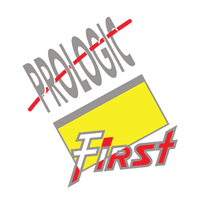Description

Aatithya HMS

QiK Circle
Comprehensive Overview: Aatithya HMS vs QiK Circle
Aatithya HMS and QiK Circle are both hospitality management systems designed to streamline operations within hotels and similar establishments. Here is an overview of their primary functions, target markets, market share, user base, and key differentiators:
Aatithya HMS
a) Primary Functions and Target Markets:
-
Primary Functions:
- Property Management: Manages reservations, check-ins/outs, guest profiles, billing, and housekeeping.
- Point of Sale (POS): Seamless integration with dining services and retail outlets within the hotel.
- Reporting and Analytics: Provides detailed reporting capabilities for operational insights and performance tracking.
- Inventory Management: Tracks and manages inventory across departments to ensure optimal stocking levels.
- CRM and Marketing: Helps in managing customer relationships and implementing targeted marketing campaigns.
-
Target Markets:
- Primarily aimed at small to mid-sized hotels, resorts, and boutique properties. It’s suitable for establishments looking to modernize their operations without overwhelming complexities.
b) Market Share and User Base:
- Aatithya HMS is popular in regions with emerging hospitality sectors where cost-effective and user-friendly solutions are in demand. Its market share is predominantly in Asia and Africa where growing hotel chains are seeking integrated solutions at a competitive price point. The user base primarily consists of independent hotels and small chains.
c) Key Differentiating Factors:
- Cost-effectiveness and simplicity of the user interface are notable strengths.
- Strong local support and customization options tailored for regional needs.
- Customer-centric features focused on enhancing guest experience and staff management.
QiK Circle
a) Primary Functions and Target Markets:
-
Primary Functions:
- Comprehensive Property Management: Advanced reservation module, channel management, housekeeping, and task automation.
- Enterprise-Level Reporting: Detailed analytics suited for larger operations or those needing in-depth operational insights.
- Integrated CRM and Loyalty Programs: Enhances guest loyalty with personalized experiences and strategic marketing.
- Mobile Accessibility: Provides robust mobile support for managing operations on the go.
-
Target Markets:
- QiK Circle is aimed at larger hotel chains, luxury resorts, and multi-property enterprises. It caters to clients needing extensive features and high scalability.
b) Market Share and User Base:
- QiK Circle commands a strong presence in North America and Europe, where there is a demand for advanced technological solutions among larger hotel chains. Its market share is significant among enterprise-level hospitality businesses. The user base includes luxury hotels, extensive resort chains, and businesses requiring complex operational capabilities.
c) Key Differentiating Factors:
- Offers more advanced analytical tools and enterprise-level features.
- Strong global footprint with capabilities to handle multi-currency and multi-language operations.
- Focus on scalability and bespoke solutions for large entities handling high guest volumes.
Comparison Overview
- Aatithya HMS is highly valued for its simplicity, cost-effectiveness, and adaptability to local markets, making it ideal for smaller establishments.
- QiK Circle offers a robust and scalable solution equipped for larger hotels with complex needs, favoring markets with extensive infrastructure and higher investment capabilities.
Both systems cater to different segments within the hospitality industry, and their selection often depends on the size of the hotel, budget, and operational complexity.
Contact Info

Year founded :
Not Available
Not Available
Not Available
Not Available
Not Available

Year founded :
2016
+91 98703 20209
Not Available
India
http://www.linkedin.com/company/qikcircle
Feature Similarity Breakdown: Aatithya HMS, QiK Circle
To provide a feature similarity breakdown for Aatithya HMS and QiK Circle, let's examine these aspects:
a) Core Features in Common:
Both Aatithya HMS and QiK Circle are Hospitality Management Systems designed to streamline operations in hotels and related settings. Common core features typically include:
-
Reservation Management: Both systems allow for booking and reservations, including handling cancellations and modifications.
-
Front Desk Operations: They offer solutions for check-in/check-out processes, guest registration, and room assignment.
-
Housekeeping Management: Tools to schedule and manage housekeeping tasks are available in both, ensuring rooms are clean and ready for guests.
-
Billing and Invoicing: Automated billing processes for guests, including room charges and other services, are standard.
-
Reporting and Analytics: They provide analytical tools to monitor occupancy rates, revenue, and other critical metrics.
-
Multi-property Management: Both systems can manage multiple properties within a single interface.
-
Integration Capabilities: Integration with third-party systems such as payment gateways, POS systems, and online travel agencies is supported.
-
Guest Management: Tools for maintaining guest profiles and enhancing guest experience are offered by both systems.
b) User Interface Comparison:
-
Aatithya HMS: Generally, Aatithya focuses on a simple and user-friendly interface designed to be intuitive for users who may not be tech-savvy. The navigation is straightforward, aiming to streamline core hospitality management functions with minimal clutter.
-
QiK Circle: QiK Circle tends to offer a more modern and visually appealing interface, with a focus on enhancing the user experience through dashboards and ease of navigation. It might offer more customization options for the user interface to match the specific branding or functional needs of a property.
c) Unique Features:
-
Aatithya HMS:
- Customization and Local Solutions: Aatithya may offer more customization towards local market needs, including specific regional compliance solutions and multilingual support tailored to its primary markets.
- Targeted Customer Features: Features like loyalty programs and promotions management could be more emphasized to enhance long-term customer engagement.
-
QiK Circle:
- Advanced Analytics and AI: QiK Circle might incorporate advanced data analytics and AI to predict trends such as guest behavior and optimize hotel operations.
- Mobile Accessibility: A more robust mobile application offering for on-the-go management and operations, catering to the increasing demand for mobility in hotel management.
In conclusion, both Aatithya HMS and QiK Circle offer comprehensive solutions for hospitality management with overlapping core features, though they may differ in areas such as user interface design and unique offerings, reflecting their focus on different market segments or technological advancements.
Features

Billing and Invoicing
Housekeeping Management
Guest Experience
Reporting and Analytics
Reservation Management

Collaboration Tools
Security and Compliance
Analytics and Reporting
Integration and API
User Management
Best Fit Use Cases: Aatithya HMS, QiK Circle
Aatithya HMS and QiK Circle are both hospitality management systems, but they cater to different needs and preferences based on the type of establishment and its specific requirements.
Aatithya HMS
a) Best Fit Use Cases:
-
Small to Mid-sized Hotels and Resorts: Aatithya HMS is typically suitable for small to medium-sized hotels and resorts looking for a comprehensive property management solution. It provides essential features that help manage bookings, guest check-ins and check-outs, billing, and housekeeping.
-
Boutique and Independent Hotels: It is also ideal for boutique and independent hotels that need a customizable and user-friendly system without the complexity and cost of larger systems.
-
Hostels and Guesthouses: These establishments can also benefit from Aatithya HMS’s straightforward approach to managing reservations and guest services.
How Aatithya HMS Caters:
- Industry Vertical: Primarily focused on the hospitality industry, serving hotels, resorts, guesthouses, and hostels.
- Company Size: Optimally supports small to mid-sized establishments that require a cost-effective solution with sufficient capabilities to manage daily operations efficiently.
QiK Circle
b) Preferred Scenarios:
-
Large Hotel Chains and High-volume Resorts: QiK Circle is ideal for larger hotel chains and high-volume resorts that require a scalable, robust, and feature-rich solution. It often caters to the needs of properties managing multiple locations.
-
Event Venues and Convention Centers: With capabilities to handle complex arrangements, QiK Circle can effectively serve event venues and convention centers that require advanced booking and space management features.
-
Luxury Hotels and High-end Hospitality Ventures: For luxurious and premium settings that need personalized guest experiences and integration with expansive services, QiK Circle offers sophisticated functionalities.
How QiK Circle Caters:
- Industry Vertical: Besides hospitality, it can penetrate markets like entertainment venues, conference centers, and large-scale event management firms.
- Company Size: Targets larger establishments and chains that require intricate management systems, data integration, and enhanced guest interaction features, supporting extensive operation levels.
Conclusion
Both Aatithya HMS and QiK Circle serve specific types of businesses within the hospitality industry. Aatithya is optimal for smaller, cost-conscious entities needing straightforward management tools, whereas QiK Circle stands out for larger, more complex operations needing a robust and comprehensive system to support their multifaceted needs. Selecting between them depends on the size of the business, the complexity of the operations, and the specific needs of the establishment in question.
Pricing

Pricing Not Available

Pricing Not Available
Metrics History
Metrics History
Comparing teamSize across companies
Conclusion & Final Verdict: Aatithya HMS vs QiK Circle
To conclude and deliver a final verdict on Aatithya HMS and QiK Circle, we need to consider various aspects such as features, usability, cost-effectiveness, scalability, customer support, and user reviews. Here’s an overview:
a) Considering all factors, which product offers the best overall value?
Best Overall Value: This can depend significantly on the specific needs and priorities of the user. However, if we assume that the general priorities are comprehensive feature sets, ease of use, and cost-effectiveness, the product offering the best overall value might slightly lean towards QiK Circle. This is based on its user-friendly interface and comprehensive customer support. However, if the requirement is highly specialized or requires extensive customization, Aatithya HMS might come forward as the better option.
b) Pros and Cons of Each Product
Aatithya HMS:
-
Pros:
- Customizability: Highly customizable to meet specific needs of different hospitality businesses.
- Comprehensive Features: Offers extensive features catering to various aspects of hospitality management.
- Industry Experience: Has a strong presence in the hospitality industry with proven expertise.
-
Cons:
- Complexity: May be overwhelming for smaller operations due to a more complex system.
- Cost: Could potentially be more expensive with additional customization fees.
- Usability: Might require more training and time to onboard staff due to complexity.
QiK Circle:
-
Pros:
- Ease of Use: User-friendly interface making it accessible for users with varying levels of tech-savviness.
- Customer Support: Strong emphasis on customer service and support.
- Scalability: Flexible and easily scalable without significant additional costs.
-
Cons:
- Feature Limitations: May lack some advanced features or flexibility required by larger or more specialized organizations.
- Integration: Could have limitations in integrating with existing systems outside its ecosystem.
- Maturity: Being a relatively newer player, there might be concerns about system maturity compared to longer-established systems.
c) Specific Recommendations for Users
Deciding Between Aatithya HMS and QiK Circle:
-
Identify Core Needs: Users should start by clearly defining the core needs of their business. For highly customizable, feature-rich solutions, Aatithya HMS could be more aligned, while QiK Circle would be preferable for those needing ease of use and rapid deployment.
-
Budget Considerations: Assess your budget constraints. If budget is a primary concern, QiK Circle may offer better value for money due to its simplicity and lower setup costs, especially for smaller to mid-sized operations.
-
Scalability Needs: Consider future growth and scalability. If the business is expected to scale rapidly, QiK Circle’s flexible and scalable solutions might be more beneficial.
-
Trial Both Systems: If feasible, users should perform trial runs of both systems to get hands-on experience. This can help in evaluating the day-to-day usability and identify any potential deal-breakers.
-
Long-Term Support and Updates: Evaluate the ongoing support and update policies for both products. QiK Circle might offer more accessible support for day-to-day operations, whereas Aatithya HMS could provide more extensive long-term upgrade paths.
Ultimately, the decision between Aatithya HMS and QiK Circle should focus on specific business needs, the scale of operations, and the budgetary allocations to ensure the selected system aligns optimally with the user’s operational goals.
Add to compare
Add similar companies




